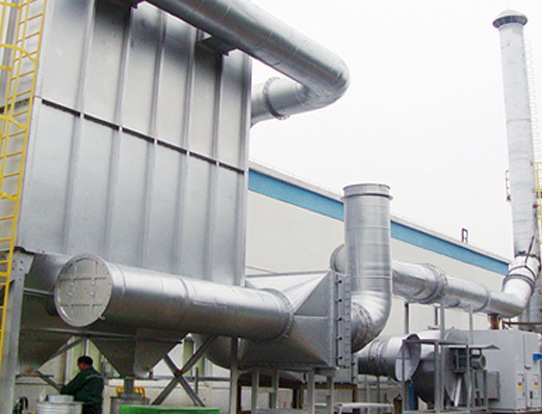
There are mainly the following ways to deal with VOCs in packaging and printing industry with high efficiency:
1. Activated carbon adsorption method
When the waste gas passes through the activated carbon fiber, the activated carbon fiber has a large number of micropores that can quickly capture the waste gas molecules and complete the adsorption process. After the adsorption saturation of the adsorption bed, the captured exhaust gas molecules will be separated from the pores again through the increase of temperature and the decrease of pressure, and will be in hot air or water vapor. After cooling, condensation and separation, it is easy to recover the solvent again.
2. Oxidation combustion method
It is divided into catalytic oxidation and regenerative oxidation:
Catalytic oxidation treatment technology (CO) refers to a treatment technology that heats the organic waste gas to more than 280 ℃, oxidizes and decomposes VOCs in the waste gas into CO2 and H2O under the action of the catalyst, and preheats the incoming waste gas when the medium and high temperature gas generated by catalytic oxidation passes through the heat exchanger, so as to save the consumption of fuel when the waste gas heats up. Regenerative combustion treatment technology (RTO) is a treatment technology that heats the waste gas to above 700 ℃, so that VOCs in the waste gas can be oxidized and decomposed into CO2 and H2O. The high-temperature gas generated by oxidation flows through the ceramic heat accumulator to heat up the "heat storage", and is used to preheat the subsequent organic waste gas, so as to save fuel consumption when the waste gas heats up. Compared with direct combustion method and catalytic oxidation method, RTO can reduce the operating costs of customers.
3. Adsorption concentration catalytic combustion method
The high air volume and low concentration organic waste gas flows into the activated carbon adsorption bed or molecular sieve runner for adsorption and purification, and is converted into low air volume and high concentration organic waste gas after desorption and regeneration, which is sent to the catalytic combustion bed for oxidation. When the temperature is above 280 ℃, the organic matter is oxidized and decomposed into harmless gases such as carbon dioxide and water. The hot waste gas after combustion heats the cold air through the heat exchanger, and part of the cooled gas after heat exchange is discharged, and part of it is used for the desorption and regeneration of honeycomb activated carbon to achieve the purpose of waste heat utilization and energy conservation.




